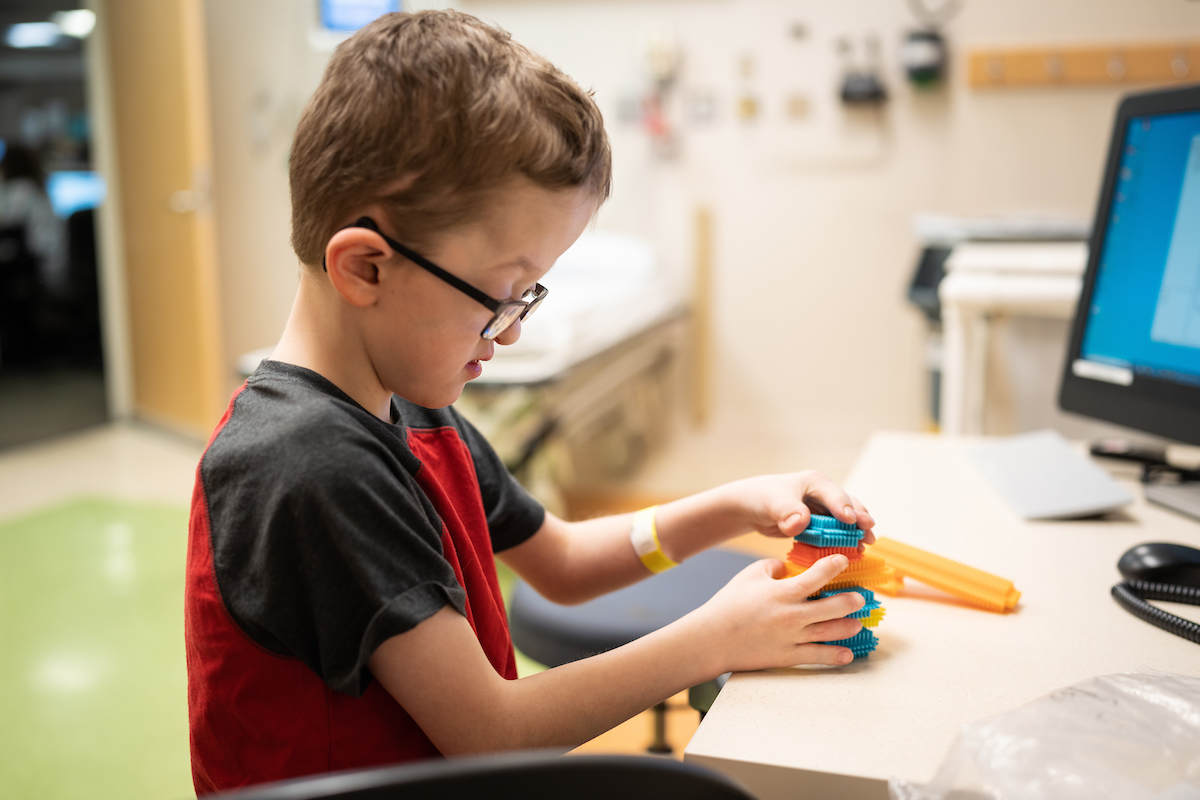What is Apert syndrome?
Apert syndrome is a genetic disorder that can affect how a baby’s head, face, hands, and feet look and work.
What causes Apert syndrome?
The Apert syndrome cause is a random mutation on a single gene. This gene produces a protein called fibroblast growth factor receptor 2 (FGFR2), which affects how bones form as an embryo develops. When the protein mutates or changes, it can sometimes lead to premature fusion of bones in the skull, hands, and feet.
Apert syndrome is a somewhat rare condition, occurring in about one of every 65,000 to 160,000 births. The condition affects males and females in equal numbers.
Most children who have Apert syndrome have no family history of the condition. Only one parent needs to carry the abnormal gene for it to be passed to a child. Some research suggests that increased paternal age may be a risk factor.
What are the Symptoms and effects of Apert syndrome?
The symptoms and effects of Apert syndrome vary from child to child. Some of the most common Apert syndrome symptoms include:
- Early fusion of skull bones (also known as craniosynostosis)
- Cleft palate
- Frequent ear and sinus infections
- Hearing loss
- Fusion or webbing of the fingers and toes
- Large or late-closing soft spot on your baby’s skull
- Possible delays in intellectual development
- Prominent or bulging eyes
- Underdeveloped or sunken middle part of the face
- Obstructive sleep apnea
- Other skeletal abnormalities, such as fusion of cervical vertebrae
- Short height
- Possible heart, gastrointestinal, or urinary conditions
How is Apert syndrome diagnosed and treated?
Apert syndrome can usually be diagnosed at birth by looking at your infant’s skull and face. Genetic testing often confirms whether your child has Apert syndrome or another condition.
There is no cure for Apert syndrome, but surgery can often help correct some of the resulting issues. As one of the region’s leading facilities for correcting this condition, Gillette Children’s provides comprehensive services throughout the diagnosis and treatment process.
Typically, facial surgery for Apert Syndrome treatment takes place in three parts:
- Cranial vault remolding surgery: Separates abnormally fused skull bones, allowing space for the brain to develop. This is usually performed when your child is 6 to 8 months old
- Midface advancement surgery: Moves the jaw and cheeks into better positions—often performed when your child is 4 and 12 years old
- Wide-set eyes (or hypertelorism) correction: Brings the eyes closer together, usually when your child is 5 to 8 years old
Apert Syndrome Services at Gillette Children's
If your child has Apert syndrome, you are in the right place. Gillette offers the region’s top pediatric specialists in craniofacial and plastic surgery. Our innovative team is pioneering the latest craniofacial treatments and technologies, which reduce recovery time and improve results for your child’s health and physical appearance.
A team of experts will collaborate to create a customized treatment plan that will help your child from birth into adulthood. Because many different specialties can be involved in a comprehensive treatment plan, we’ll help you navigate the services you need, which might include:
Michael's Apert Syndrome Journey at Gillette Children's
 Home Page
Home Page



